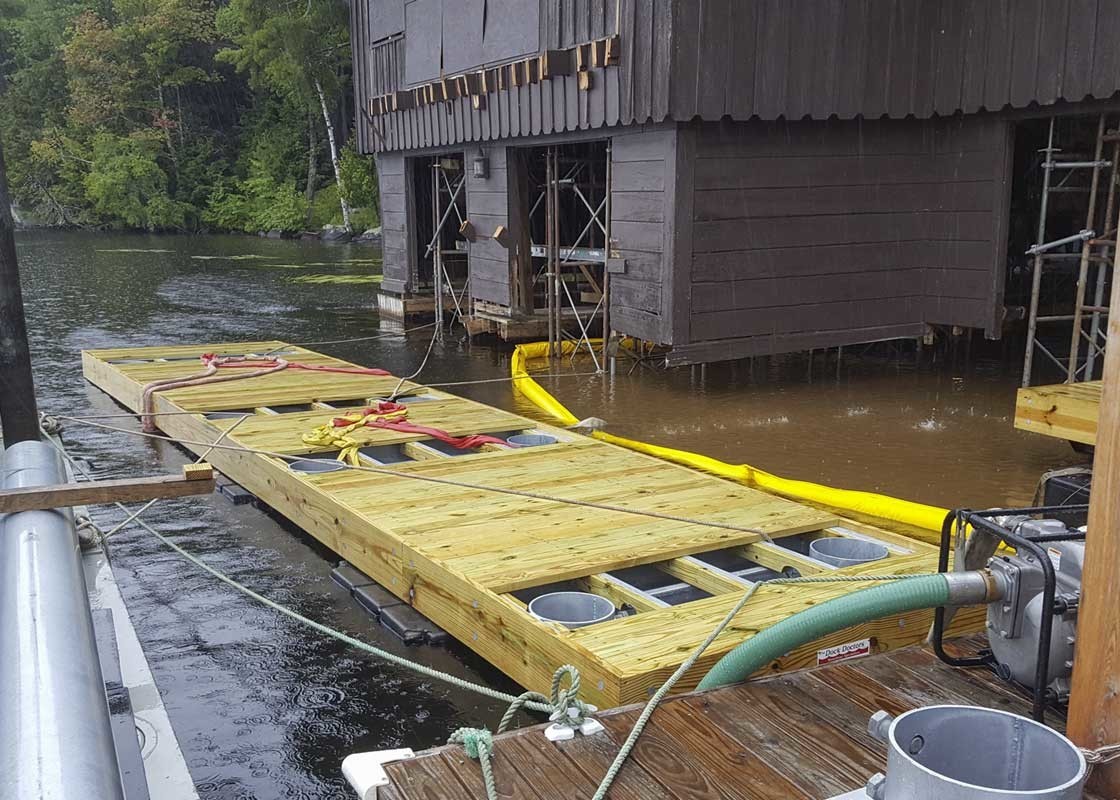Effective Dock Repair Techniques: Ensuring Structural Integrity
Ensuring the architectural stability of docks through effective repair techniques is paramount for the longevity and safety of marine facilities. This entails a multi-faceted strategy beginning with detailed examinations utilizing innovative innovations like sonar equipment and remotely ran lorries (ROVs) to identify both noticeable and concealed damages. Ultimately, picking the appropriate fixing products, such as corrosion-resistant alloys and composite products, is essential for sturdiness. Architectural reinforcement methods, consisting of the execution of cross-bracing systems and load-distribution plates, play a crucial function in mitigating stress factors. Nevertheless, the significance of these techniques comes to be evident when exploring sophisticated repair work methods and preventative upkeep methods.
Analyzing Dock Damage
Evaluating dock damage is an essential initial action in ensuring the structural honesty and safety and security of any docking facility. Secret aspects to take a look at consist of the dock's foundation, pilings, outdoor decking, and equipment (Dock Repairs).
Structural engineers or qualified inspectors generally carry out these evaluations utilizing specialized tools and methods. As an example, undersea assessments may use sonar devices or remotely ran lorries (ROVs) to detect immersed damage. Above water, visual inspections are complemented by making use of dampness meters and other analysis devices to discover underlying issues not quickly noticeable to the naked eye.

Choosing Repair Service Products
Picking the suitable repair materials is a crucial action in the dock repair process, one that directly influences the longevity and efficiency of the repaired framework. Product selection must be driven by variables such as ecological conditions, load-bearing needs, and compatibility with existing dock elements.
In addition to timber, composite materials are significantly prominent due to their sturdiness and low upkeep demands. Compounds, generally made from a mix of plastic and wood fibers, offer exceptional resistance to rot, insects, and UV damages. For metal anchors, choosing corrosion-resistant alloys such as galvanized steel or marine-grade light weight aluminum is important to protect against corrosion and ensure architectural integrity in saline water conditions.
Epoxy resins and marine-grade sealers are essential for fixing cracks and securing joints, providing a water resistant obstacle and boosting the dock's total strength. By thoroughly picking high-quality materials, dock fixings can attain lasting results, consequently guarding versus future degradation and guaranteeing risk-free, reliable use.
Structural Reinforcement Methods
Efficient architectural reinforcement techniques are crucial in guaranteeing the stability and longevity of dock fixings. This method is specifically reliable for anchors revealed to hefty tons or rough ecological problems.
One more important technique is the application of fiber-reinforced polymers (FRP) These materials offer high strength-to-weight proportions and excellent resistance to deterioration, making them ideal for enhancing concrete or wooden docks. FRP can be used in sheets or strips and bonded with epoxy materials to improve structural honesty.
Supporting and anchoring systems additionally play a critical duty in architectural support. Cross-bracing, utilizing steel or wooden beams, can combat lateral pressures, decreasing persuading and motion. Securing systems, such as helical piers or driven stacks, give a steady structure by transferring lots to deeper, extra steady dirt layers.
Finally, the assimilation of load-distribution plates can aid distribute weight more equally across the dock's surface, alleviating localized anxiety points. These strategies collectively make certain that anchors remain risk-free and durable, with the ability of standing up to the rigors of their operational setting.
Advanced Repair Techniques

One more sophisticated technique involves underwater welding, which permits repairs to be conducted without the need to dewater the area. This method is particularly advantageous for dealing with structural issues in immersed dock parts, making certain marginal disturbance to operations. Enhanced welding techniques, paired with robot systems, deliver precision and reliability, thereby expanding the life-span of the dock.
Furthermore, cathodic security systems are executed to stop rust in metallic dock structures. By utilizing sacrificial anodes or satisfied current systems, these techniques properly minimize the electrochemical processes that lead to product degeneration.
Finally, advanced monitoring modern technologies, such as architectural health surveillance (SHM) systems, supply real-time information on the condition of dock frameworks. These systems allow proactive upkeep and timely treatments, eventually guaranteeing the lasting architectural integrity of the dock.
Maintenance and Prevention
Upkeep and avoidance are fundamental principles that underpin the longevity and safety and security of dock frameworks. Regular inspections are extremely important, permitting early discovery of wear and tear, prospective weak points, and environmental impacts. A positive method, entailing routine look for corrosion, rot, and architectural shifts, alleviates costly fixings and lengthens the dock's operational life.
Preventative procedures should include using protective layers to metal parts to safeguard versus rust and making use of treated timber to resist decay. Furthermore, guaranteeing correct drainage and ventilation can protect against water accumulation, which is an usual reason of structural deterioration. Including quality materials web and adhering to maker standards throughout building and construction and repair work stages additionally play crucial roles in enhancing toughness.

Educating workers in dock maintenance best practices guarantees constant application of safety nets. Leveraging technical breakthroughs, such as drones for examinations and sensing units for real-time tracking, can even more enhance upkeep efforts. By prioritizing upkeep and prevention, dock owners can make sure architectural stability, operational safety and security, and cost-efficient administration over the dock's life expectancy.
Conclusion
Finally, preserving the structural integrity of aquatic facilities demands detailed dock repair work techniques. Thorough examinations utilizing innovative tools reveal both visible and hid problems, while the option of suitable repair materials enhances toughness. Executing architectural support approaches addresses tension points effectively. Advanced fixing methods, combined with regular upkeep techniques, make sure the dock remains secure and operational under diverse ecological problems. Adopting these methods significantly extends the life-span and capability of marine infrastructure.
Making certain the architectural integrity of docks through effective repair work methods is vital for the long life and safety and security of aquatic centers.Picking the ideal fixing products is a pivotal action in the dock reconstruction procedure, one that straight affects the long life and efficiency of the fixed structure.Effective structural reinforcement techniques are crucial in making certain the security and long life of dock fixings. By focusing on upkeep and avoidance, dock proprietors can make sure architectural honesty, functional security, and affordable administration over the dock's lifespan.
In conclusion, preserving the structural integrity of aquatic facilities demands thorough dock repair service methods.